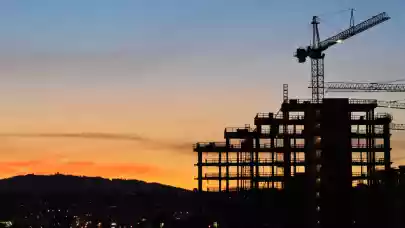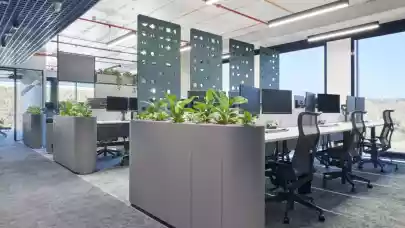
The impact assessment of the 2022 Russian invasion of Ukraine on the Slovenian construction market must take into account the current volatile situation associated with the pandemic. Even before the war in Ukraine started, building material manufacturers reduced their capacity, either due to logistics problems resulting from the global closure of countries or due to declining demand. As the last wave of the pandemic ended, supply failed to keep up with increased demand and construction material prices began to rise, writes Dr Aleš Pustovrh (Bogatin d.o.o.) for EECFA Slovenia.
EECFA (Eastern European Construction Forecasting Association) is conducting research on the construction markets of 8 Eastern-European countries such as Bulgaria, Croatia, Romania, Russia, Serbia, Slovenia, Turkey and Ukraine.
According to statistics, building material prices in Q3 2021 compared to Q3 2020 rose by a fifth. The implicit deflator of the value of construction put in place (which measures prices in construction) exceeded 14%, the highest in 20 years. Additionally, rising energy prices - electricity, gas and other fuels - contributed most to the overall construction cost increase. At the end of February 2022, the annual inflation rate in Slovenia was 7%.
Despite high inflation, construction output in Slovenia has increased. Following a gradual decline in construction activity in 2021, the value of construction works rose again at the beginning of 2022. Construction companies performed 5,8% less construction work in 2021, mainly due to a decrease in the number of projects in non-residential buildings. Yet, non-residential grew most among all construction subsectors in January 2022. High activity was also recorded in housing construction at the end of 2021 and in early 2022. Residential construction output remains high but is still lagging behind demand for housing, resulting in a fast increase in prices for residential real estate. In nominal terms, prices at end-2021 were 26% higher than the 2008 average. In the housing market, the growth of residential real estate prices in the last quarter of 2021 accelerated further. Construction output has also increased in the civil engineering sector, backed by public investment. The state is investing in the construction of the second track to Port Koper, the third development axis in road connection, the modernization of railways, the renovation of state roads and cycle paths, the construction and renovation of the electricity network; and there are large investments in water supply infrastructure. The state is also planning to invest in healthcare. As 2022 is an election year, an increase in public expenditure was expected, but its growth has exceeded even the most optimistic expectations.
Economic activity in construction in 2022 and beyond will be highly dependent on the development of events related to the war in Ukraine. The direct dependence of the Slovenian economy on the Russian and Ukrainian markets is relatively small, but this conflict can have a strong impact on inflation in Slovenia, the global financial markets, trust, and supply chain operations. The Russo-Ukrainian war will continue to raise commodity prices, too. Not only iron will rise in price, but also nickel and aluminium whose price has jumped to a new record. The prices of oil and natural gas are also rising, which will also raise the price of cement. Ukraine was a major exporter of clay to produce ceramic tiles, so we can expect that the price of tiles will hike due to the lack of clay and rising energy prices. Construction companies want to pass on such increases to public contracting authorities (built-in inflation), but they have only been partially successful so far. In the coming months, the measures taken by the Slovenian government will reduce energy prices, so it is projected that prices will no longer exceed the February level, but they will not decrease either. The rise in prices in construction is also affected by the lack of workers. There is still a large surplus of demand in the labour market over the supply of skilled workers in the industry.



